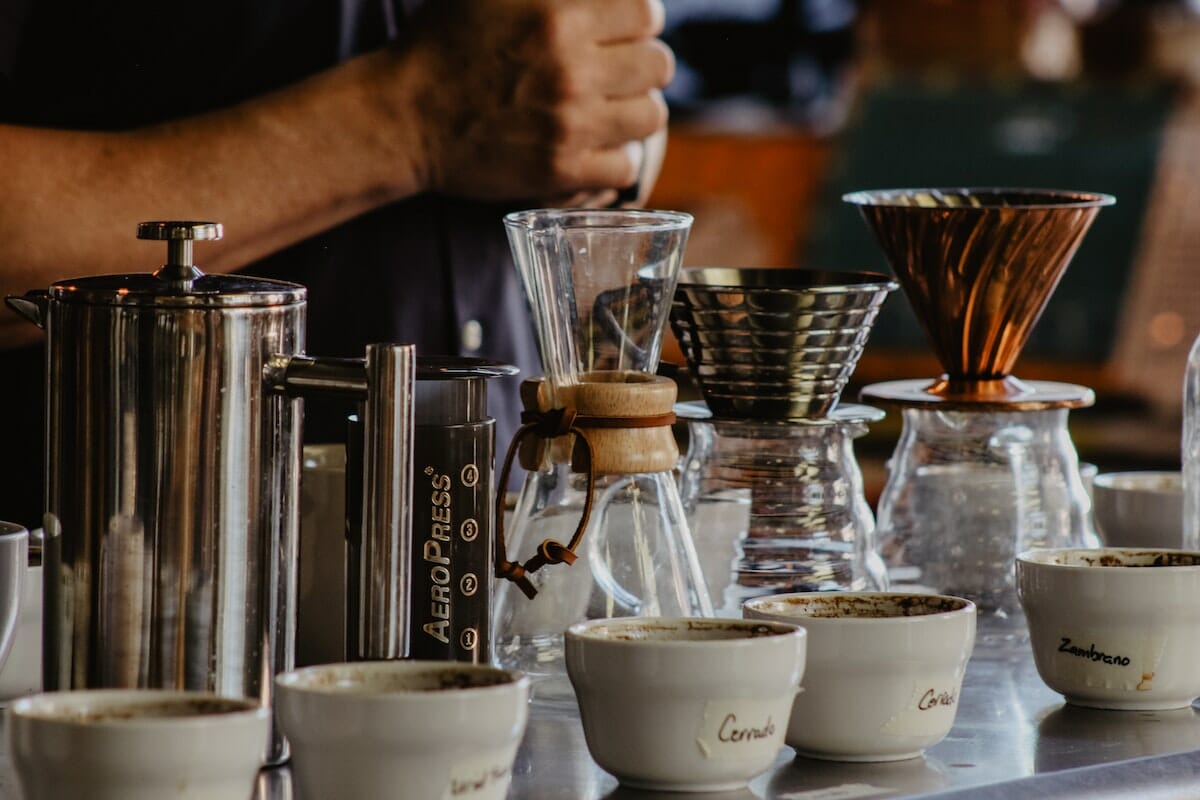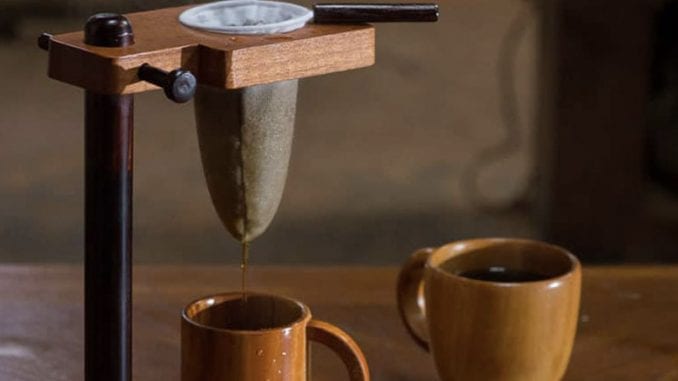A Comprehensive Overview to Numerous Coffee Brewing Methods You Need To Attempt
A Comprehensive Overview to Numerous Coffee Brewing Methods You Need To Attempt
Blog Article
The Scientific Research Behind Coffee Brewing: How Temperature and Time Affect Your Beverage
Understanding the scientific research behind coffee developing discloses that temperature and time are not plain variables yet pivotal elements that dictate the drink's flavor profile and general quality. The optimal brewing temperature level normally falls in between 195 ° F and 205 ° F, while the period of extraction differs dramatically across different techniques. This interaction of aspects can cause a mug that is either unsatisfactory or wonderful. As we check out the nuances of these elements, the inquiry emerges: exactly how can one successfully balance temperature level and time to attain that best brew?
The Chemistry of Coffee Extraction
The chemistry of coffee removal looks into the detailed procedures that change raw coffee beans right into the fragrant beverage appreciated worldwide. This makeover mostly includes the solubility of different compounds present in the beans, which are affected by aspects such as grind dimension, water high quality, and the developing method employed.
Throughout the developing procedure, warm water acts as a solvent, removing soluble substances, consisting of high levels of caffeine, sugars, lipids, and acids, from the coffee premises. Each substance adds to the flavor profile, fragrance, and body of the final drink. Acids are responsible for bright and tasty notes, while oils contribute to a rich mouthfeel.
The first phases of brewing remove acids and sugars, leading to an enjoyable level of acidity, while long term extraction can lead to resentment due to over-extraction of undesirable substances. Understanding these chemical interactions is crucial for optimizing developing techniques, as the balance in between removal time and water temperature level can dramatically affect the general quality of the coffee.
Ideal Developing Temperatures
Discovering the best developing temperature level is vital for unlocking the complete possibility of coffee flavors and aromas - coffee brewing methods. Study shows that the optimum variety for developing coffee exists between 195 ° F to 205 ° F(90 ° C to 96 ° C) Within this array, the extraction procedure successfully dissolves the preferable soluble compounds in coffee beans, bring about a flavorful and well balanced cup
Developing at reduced temperature levels, such as below 195 ° F(90 ° C ), may cause under-extraction, generating an acidic and weak brew with low-key flavors. Conversely, brewing at temperature levels surpassing 205 ° F(96 ° C) can lead to over-extraction, creating a rough and bitter taste as a result of the excessive dissolution of unwanted compounds, such as tannins.
Additionally, the optimal brewing temperature can differ depending upon the coffee bean kind and roast level. For example, lighter roasts frequently profit from slightly greater temperature levels to enhance their complicated taste profiles, while darker roasts might be better matched to lower temperature levels to alleviate bitterness.
Inevitably, preserving precision in brewing temperature levels is vital for achieving an unified equilibrium of tastes, making certain that every cup of coffee supplies an enjoyable sensory experience.
Effect of Brewing Time
Developing time plays a critical role in determining the taste profile and general high quality of coffee. Shorter brewing times can result in under-extraction, leading to a sour or weak taste, as not enough soluble substances are dissolved.
Ideal developing time varies depending upon the method used and the work size of the coffee. A French press commonly needs regarding 4 minutes, while espresso extraction is typically completed within 25 to 30 secs. It is vital to adjust developing time in conjunction with various other variables, such as water temperature level and coffee-to-water ratio, to accomplish the wanted flavor profile.
Understanding the influence of brewing time enables coffee enthusiasts to improve their brewing techniques, eventually boosting the sensory experience of their cup (coffee brewing methods). With careful focus to this variable, one can unlock the complete potential of the coffee, disclosing its distinct characteristics and nuances
Developing Techniques and Their Effects

For example, approaches like French press and cold brew enable for a much longer steeping time, resulting in a fuller body and robust flavor because of boosted removal of oils and soluble solids. Conversely, espresso developing makes use of high stress and a shorter removal time, producing a concentrated shot that stresses intense flavors and a rich crema.
Pour-over strategies, such as Chemex or V60, offer an even more controlled extraction procedure, allowing the brewer to manipulate circulation rate and water circulation, which can boost illumination and clarity. On the other hand, percolation techniques cycle water via the coffee premises numerous times, causing a more powerful, usually bitter taste.
Finally, using paper filters versus metal filters can additionally influence the final taste; paper filters generally yield a cleaner cup by capturing oils and great fragments, while steel filters enable more oils to pass through, adding to a fuller mouthfeel - coffee brewing methods. Understanding these subtleties can elevate the coffee experience substantially
Tips for Improving Your Brew
A well-executed mixture can change even the most basic browse around here coffee right into an amazing experience. To achieve this, focus to detail is necessary. Beginning with high-grade, newly roasted beans, as their flavor profile reduces in time. Grind the beans right before making to make the most of quality, guaranteeing the work size matches your developing approach-- coarser for French press and finer for espresso.
Water top quality plays a crucial role; use filteringed system water without pollutants. The suitable developing temperature level ranges in between 195 ° F and 205 ° F(90 ° C to 96 ° C ) As well hot can blister the coffee, while also cool might under-extract tastes.
Timing is similarly essential. For immersion techniques, steeping for 3 to 5 minutes is ideal, whereas drip approaches usually take about five mins. Experiment with brew times to locate your preferred strength.

Verdict
In summary, the detailed partnership between temperature level and time Bonuses is paramount in the coffee developing procedure. Following ideal developing temperatures in between 195 ° F and 205 ° F, together with specific timing customized per approach, makes certain the wanted taste profile is accomplished. Comprehending these scientific principles equips individuals to refine their brewing techniques, ultimately resulting in a much more well balanced and satisfying coffee experience. Mastery of these variables is important for any type of coffee enthusiast looking for quality in see post their beverage.
Comprehending the scientific research behind coffee developing reveals that temperature level and time are not plain variables yet critical aspects that dictate the drink's flavor profile and overall quality. Understanding these chemical interactions is essential for optimizing developing techniques, as the equilibrium between extraction time and water temperature level can dramatically affect the overall quality of the coffee.Developing time plays an essential function in figuring out the taste account and total top quality of coffee. By focusing on these elements-- bean top quality, grind dimension, water temperature level, steeping time, and proportion-- you can elevate your coffee brewing procedure, resulting in a regularly premium cup.
In summary, the detailed relationship between temperature level and time is critical in the coffee developing procedure.
Report this page